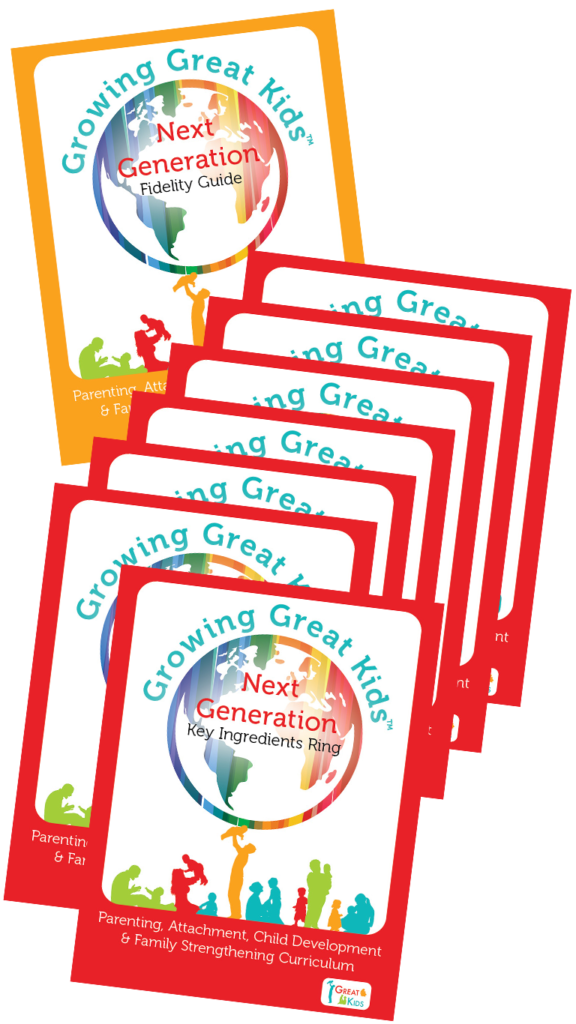 | | | | About the Author Melissa Weekes is a Product Development Specialist. Prior to joining Great Kids® in 2018, she worked as a home visitor with Public Health Services where she used the Growing Great Kids® Curriculum. Melissa lives in Nova Scotia, Canada, with her husband and enjoys any opportunity to be creative! |
HOW WE ARE with people is as important, and perhaps more so, than what we say or do.3
Let me give you an example of what I mean.
Imagine you’re approaching the checkout at your small local grocery store after grabbing a few items. There’s only one cashier working, and the line is long. You sense everyone’s impatience as you slip into place at the back of the line, texting a family member to let them know you’ll be a bit later than expected. You wondered why the store was so busy and empathized with the lone cashier who must be having a rough day. You can’t imagine they’ll have anything left for you by the time you get up there. But, when it’s your turn, you’re pleasantly surprised.
The cashier makes eye contact, smiles, and greets you with a warm “Hello.” Your heart is lifted, and you instantly feel at ease as you start to make small talk. The cashier scans your items, and you find yourself telling them about the new recipe you’re trying out for supper.
You thank them, leaving the store feeling great about their service and cheerful and refreshed. WHY? Because you had a first-class checkout experience and enjoyed a sense of connection and community for a few brief moments based on how this cashier made you FEEL.
In other words, it’s HOW WE ARE with people that makes them feel “welcome, understood, and respected.”3 This is about more than our words; it’s about how we make people FEEL by the spoken and unspoken messages we communicate.
This is why we attach emojis and GIFs to our texts and emails. We’re dropping clues that imply how the receiver should interpret our words and actions. These “soft skills” are known as RELATIONAL COMMUNICATION, and it’s a universal skill set we all need if we want to build meaningful connections.
When it comes to our ability to relate with others, it’s easy to categorize ourselves into either a ‘can’ or ‘can’t’ group. But in reality, these skills can be learned just like any other. As Rachel mentioned in last month’s blog, we can adopt a growth mindset around improving our relational communication skills to make people feel valued and understood.
And when it comes to making people feel valued and understood, our relational communication skills can look like:1,4
- Showing our appreciation or admiration for people through the tone of our voice and nonverbal cues,
- Demonstrating our interest and engagement with others through our gestures and body language,
- Communicating our respect for individuals through our listening skills and by remembering key information, and
- Conveying an equal partnership through our attitude and word choice.
In the grocery store scenario above, the cashier conveyed their appreciation and respect through their energy level, facial expression, and body language.
To become effective communicators, we must be aware of the messages we’re sending – both the ones that hit the mark and those that misfire.
And let’s face it, we all have room to improve.
According to experts, improving our communication skills also involves enhancing our emotional self-awareness.1,2 Researcher Brené Brown shares that,
“Our connection with others can only be as deep as our connection with ourselves.”2
As we grow awareness and understanding of our own emotions, we’re better able to empathize with the feelings of others.2 Communicating with empathy is one way to support others to feel valued and understood.
At the end of the day, we all want to be better communicators because we all crave deeper connections.5 Whether it’s with our spouse, child, friend, coworker, manager, or a member of the public, being a better communicator enriches our life and the lives of those around us. In our tech-savvy world, there’s never been a greater need for authentic relational communication.
Because of this, Great Kids is on the verge of releasing ENGAGE, a communication framework for responsive partnerships and effective engagement.
This training is open to anyone. Whether you’re a parent or a professional, a skilled communicator, or a minimal talker, there’s something in this course for YOU. Because, when it comes to building trusting relationships (even at the grocery store), HOW WE ARE is more important than what we do.3
If you’re interested in learning more about ENGAGE, please contact info@greatkidsinc.net.
References:
1. Adler, R. B., Rodman, G., & du Pré, A. (2020). Understanding human communication (14th ed.). Oxford University Press.
2. Brown, B. (2021). Atlas of the heart: Mapping meaningful connection and the language of human experience. Random House.
3. Cole, A. P., & Lerner, C. (2015, July 22). Zero To Three comments on family engagement before the Interagency Policy Board. Zero To Three. https://www.zerotothree.org/resources/518-zero-to-three-comments-on-family-engagement
4. Kirst-Ashman, K. K., & Hull, G. H. (2018). Understanding generalist practice (8th ed.). Cengage Learning.
5. Perry, B. D., & Winfrey, O. (2021). What happened to you? Conversations on trauma, resilience, and healing. Flatiron Books.


